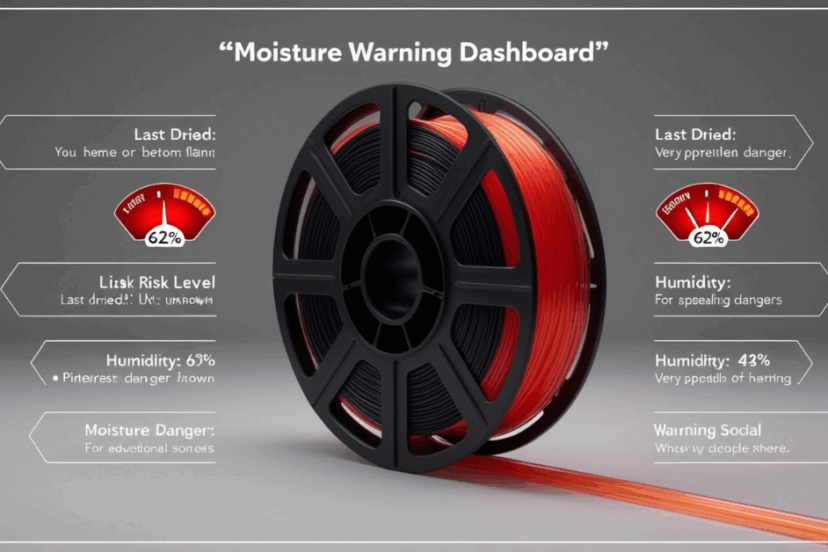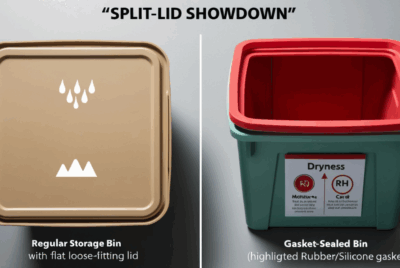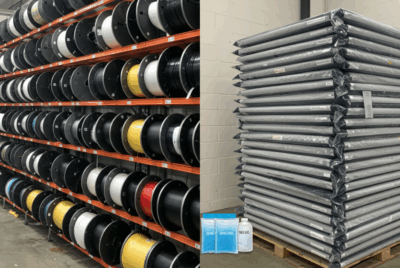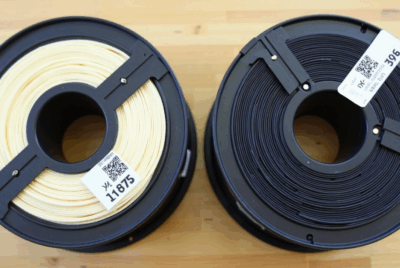Should You Re-Dry Filament Before Every Print Job?
1. Moisture Is Sneaky
Let’s be honest—we’ve all skipped drying “just this once.”
The filament looks fine. It feels fine.
So you load it up and hit print…
And then:
Stringing. Popping. Weak layers. Trash.
The truth is: even clean-looking filament can sabotage your print. So…
Should you re-dry filament before every print?
Let’s break it down.
2. Why Filament Gets Wet Again So Easily
Even in a sealed room, most filaments begin to reabsorb moisture the minute they’re out of storage.
PETG can degrade in 12–24 hours\
Nylon absorbs water in a few hours
Even PLA picks up enough humidity in a day or two to affect print quality
So unless your filament has been perfectly stored… it’s at risk.
3. The Real Risks of Skipping Re-Drying
Moist filament = bad prints. Every time.
Here’s what you’re gambling with:
- Popping sounds while printing
- Stringing and blobbing
- Layer delamination
- Clogged nozzles
- Cracked, brittle, or weak prints
Not worth ruining a 12-hour print for, right?
4. When You Don’t Need to Re-Dry
You probably don’t need to re-dry if:
The spool was just dried and sealed
It’s been stored in a vacuum bag with fresh silica
It hasn’t been opened or used since drying
You’re working in a climate-controlled, low-RH space
In these conditions, your filament can stay print-ready for weeks or even months.
5. When You Absolutely Should
Re-dry before printing if:
The filament’s been out for more than 1–2 days
You’re using PETG, Nylon, TPU, or PVA
You’ve experienced poor print quality recently
You don’t remember the last time it was dried
You live in a humid environment or coastal area
When in doubt, dry it out.
6. How to Tell If It Needs Drying Again
Use your senses:
Hear: popping, hissing, or crackling sounds during extrusion
See: bubbling, stringing, rough surfaces
Feel: brittle filament or weird softness
Weigh: heavier than when freshly dried
Compare: try a short print vs. a known dry spool
7. Sensitive Filaments That Always Deserve a Dry Cycle
Some materials just don’t play around with moisture.
| Filament Type | Re-Dry Every Time? | Notes |
|---|---|---|
| Nylon | ✅ Yes | Absorbs moisture in hours |
| TPU | ✅ Yes | Gets gummy and stretchy |
| PVA | ✅ Yes | Moisture ruins solubility |
| PETG | ⚠️ Often | Sensitive to humidity swings |
| PLA | ⚠️ Occasionally | Safer but not immune |
Rule of thumb: The more exotic the filament, the more drying it needs.
8. Re-Drying Time Doesn’t Have to Be a Time Sink
Drying doesn’t mean wasting your entire day.
Set up a routine:
- Toss filament in the dryer while you prep your model or slicer
- Run a 3–4 hour cycle in your SUNLU S2, eBox, or dehydrator
- Start printing right after—no delays
Make drying part of your warm-up routine.
9. How Long Can Filament Sit Between Prints?
Here’s a quick reference:
| Storage Method | Safe Duration Before Re-Drying |
|---|---|
| Open air | < 24 hours |
| Dry box (not vacuumed) | 3–5 days |
| Vacuum bag + silica | 2–8 weeks |
| Factory-sealed | Up to a year (if seal is good) |
If you’re on day 3 or more—and it wasn’t sealed—re-dry it.
10. Use a Storage-to-Drying Workflow
Here’s a great system:
Store filament in vacuum bags with silica
Track last dried date with a sticker
Before printing, check:
- Open time?
- Storage conditions?
- Print type?
- If needed, re-dry before use
This system = fewer fails, less stress.
11. Tools That Make Re-Drying Easier
Use any of these to simplify the habit:
SUNLU S2 Filament Dryer
PrintDry Pro (great for multiple spools)
Food dehydrator (modded)
Oven (with caution—set to 50–60°C)
Label printer or stickers for tracking dates
The easier it is, the more likely you’ll do it.
12. Visual and Audible Signs You Skipped Re-Drying
You know it’s too late when:
- Your print has bubbles, gaps, or popping lines
- The nozzle is oozing or stringing like crazy
- The filament snaps while feeding
- You can hear hissing or crackling
Don’t make your printer suffer—catch it early.
13. Why “Just One Print” Can Still Be a Problem
Skipping drying for “a quick print” leads to:
- Wasting time
- Clogging your nozzle
- Weak prints
- Having to re-dry and re-print anyway
One small mistake = a whole big headache. Build the habit instead.
14. Batch-Dry Strategy for Active Projects
If you’re doing a project that uses:
Multiple filament
Lots of reprints
Prototypes or client models
Then batch-dry everything in one go and store spools in a dry box with filament feed ports.
Print directly from dry storage, and you’re golden.
15. Final Thoughts: Make It a Habit, Not a Hassle
No, you don’t need to dry your filament every single time…
But you should definitely check if it needs it—and don’t be afraid to re-dry when unsure.
It’s one of the easiest ways to:
✅ Boost print quality
✅ Avoid nozzle jams
✅ Save hours of reprinting
Drying isn’t overkill—it’s just part of the process.
❓FAQs
1. Do I need to dry PLA every time?
Not always—but if it’s been open for more than a week or stored poorly, yes.
2. Is there such a thing as “over-drying” filament?
Generally no—though you don’t want to overheat filament during drying. Use proper temps (50–60°C for PLA/PETG, etc.).
3. Can I print while drying filament?
Yes! Many filament dryers (like SUNLU S2 or PrintDry Pro) allow for live printing during drying.
4. Can I re-dry filament too many times?
No—drying doesn’t wear out filament. Just avoid prolonged high heat to prevent warping.
5. What’s the fastest way to dry filament?
Use a filament dryer set to the correct temp and run it for 4–6 hours. Avoid ovens unless you’ve tested for safe and steady temps.




